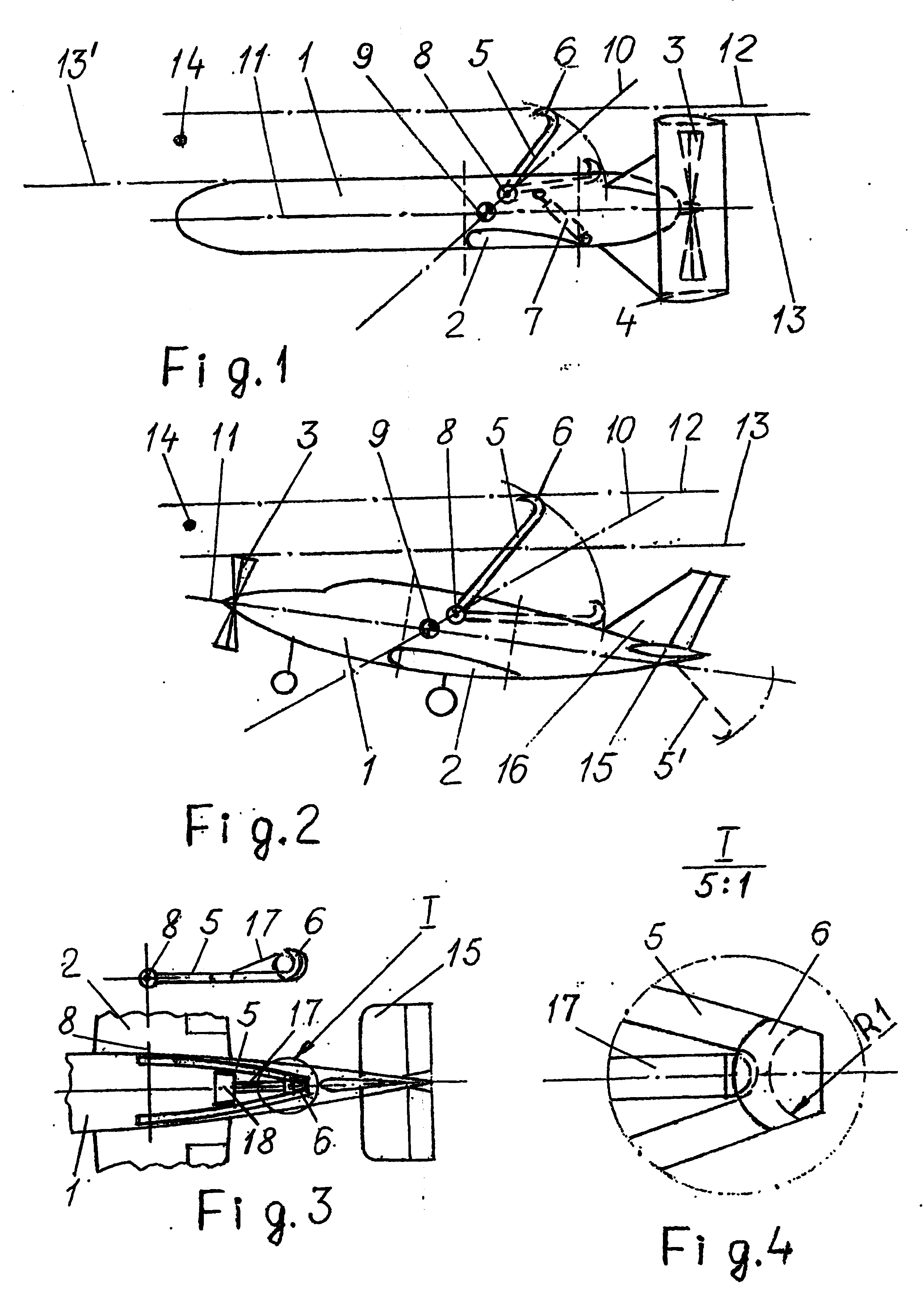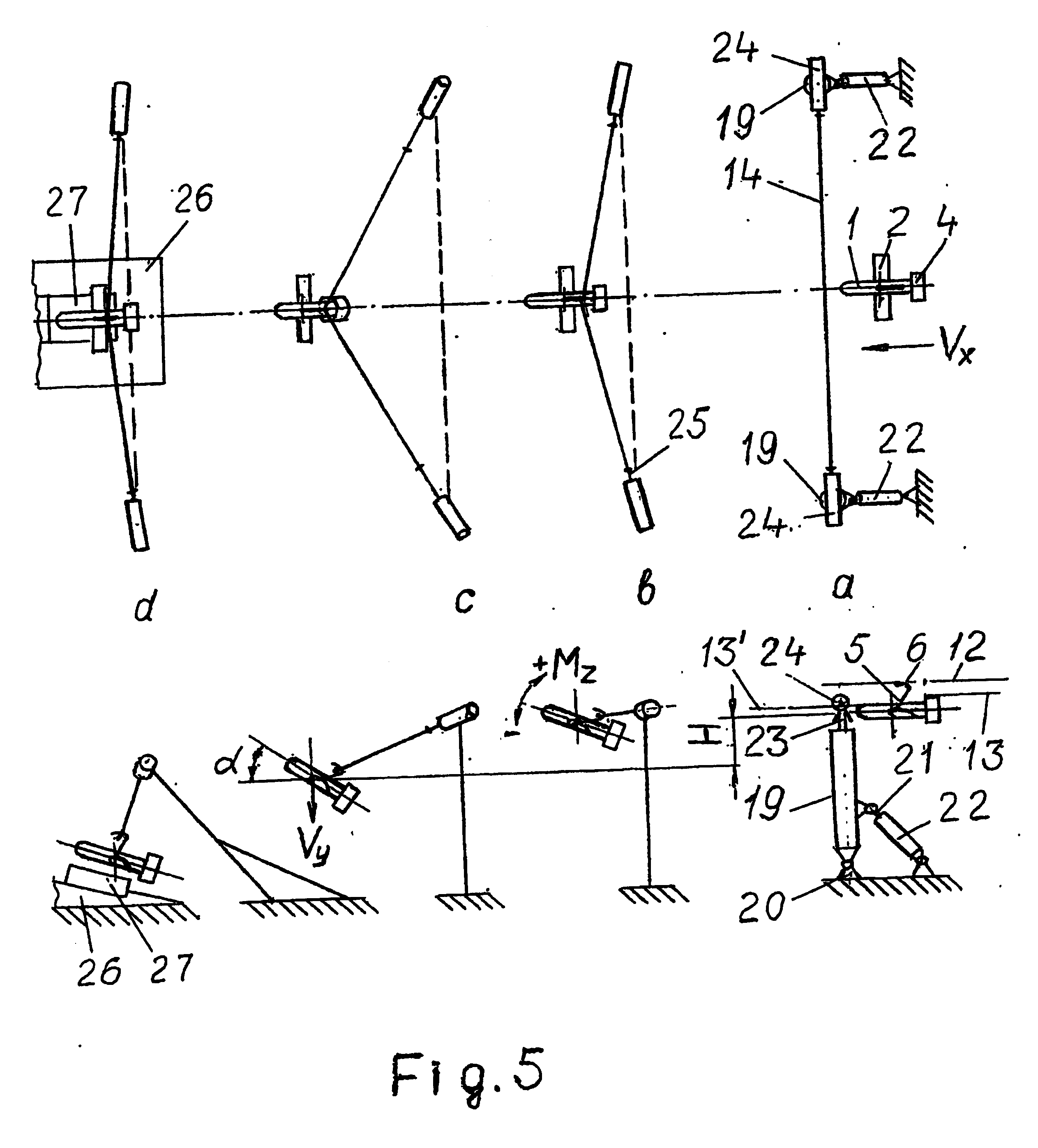Aircraft
a technology for aircraft and landing systems, applied in the field of aircraft, can solve the problems of inconvenience of pilot placement, inability to carry out commercial applications, and inability to provide information on the practical application of landing systems
- Summary
- Abstract
- Description
- Claims
- Application Information
AI Technical Summary
Benefits of technology
Problems solved by technology
Method used
Image
Examples
Embodiment Construction
[0046] The purpose of the present invention is elimination of the specified disadvantages of the prototype (at preservation of the above listed advantages), namely, increase of carrying capacity, reduction of—service—cost, increase of landing reliability, and also resolution of common fault of all above listed analogues-expansion of application field (arsenal) of the aircrafts with off-aerodrome landing, including civil passenger airplanes, gliders, flying airplane models and unmanned airplanes.
[0047] The problem in view is resolved by the aircraft comprising a fuselage, a lifting wing and onboard part of the landing and braking device, including the [0048] gripped element placed with possibility of letting out above the landing aircraft and intended to engage by the catching element of the stationary part of the brake device situated at the landing site, and also comprising the force element connecting the gripping element with the aircraft and fixed on the aircraft with opportuni...
PUM
 Login to View More
Login to View More Abstract
Description
Claims
Application Information
 Login to View More
Login to View More - R&D
- Intellectual Property
- Life Sciences
- Materials
- Tech Scout
- Unparalleled Data Quality
- Higher Quality Content
- 60% Fewer Hallucinations
Browse by: Latest US Patents, China's latest patents, Technical Efficacy Thesaurus, Application Domain, Technology Topic, Popular Technical Reports.
© 2025 PatSnap. All rights reserved.Legal|Privacy policy|Modern Slavery Act Transparency Statement|Sitemap|About US| Contact US: help@patsnap.com



